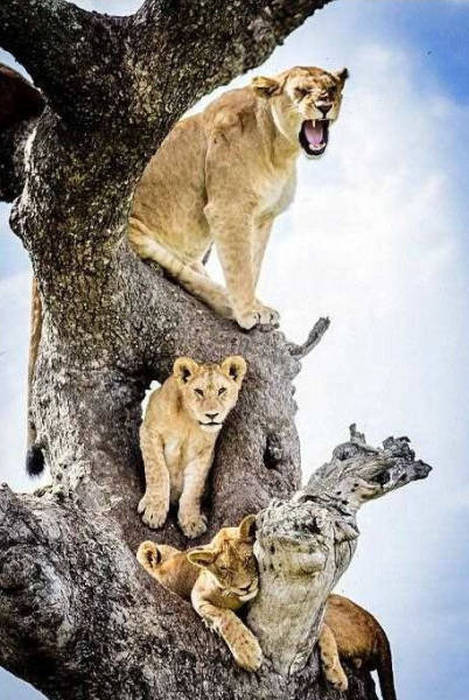|
|
Lions On The Tree
|
Communication
When resting, lion socialization occurs through a number of behaviors, and the animal's expressive movements are highly developed. The most common peaceful tactile gestures are head rubbing and social licking, which have been compared with grooming in primates. Head rubbing—nuzzling one's forehead, face and neck against another lion—appears to be a form of greeting, as it is seen often after an animal has been apart from others, or after a fight or confrontation. Males tend to rub other males, while cubs and females rub females. Social licking often occurs in tandem with head rubbing; it is generally mutual and the recipient appears to express pleasure. The head and neck are the most common parts of the body licked, which may have arisen out of utility, as a lion cannot lick these areas individually.
Lions have an array of facial expressions and body postures that serve as visual gestures. Their repertoire of vocalizations is also large; variations in intensity and pitch, rather than discrete signals, appear central to communication. Lion sounds include snarling, purring, hissing, coughing, miaowing, woofing and roaring. Lions tend to roar in a very characteristic manner, starting with a few deep, long roars that trail off into a series of shorter ones. They most often roar at night; the sound, which can be heard from a distance of 8 kilometres (5.0 mi), is used to advertise the animal's presence. Lions have the loudest roar of any big cat.
|
|









